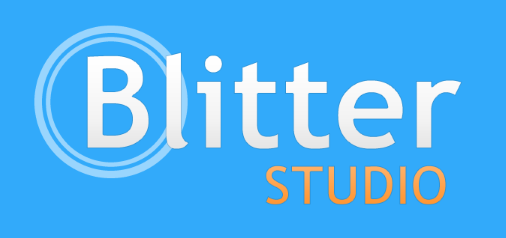
Turn your computer into an Amiga!
Amiberry is an optimized Amiga emulator, originally designed for ARM-based SoCs (such as the Raspberry Pi) but now also available for macOS (both Intel and Apple Silicon) and Linux x86-64, that brings you the highest performance Amiga emulation. Be it a classic A500, A1200, CD32 or up to a high-end model equipped with a 68040 and a graphics card, we’ve got you covered. The code is based on the latest WinUAE for the core emulation, but with some parts stripped down and optimized specifically for lower-powered boards. Additionally, there are several features that were developed specifically for Amiberry, such as WHDLoad support, custom events, support for RetroArch mapping, etc.

It’s an open-source project under GPLv3 that started back in 2016, built with the efforts of several people and based on previous work of others. You are welcome to join the project and help make Amiberry even better! Visit the project page on Github for more.
Nowadays, Amiberry is already included in several popular distros (like RetroPie, DietPi, Amibian, The RetroArena, Batocera, Pimiga and others) and in many cases it can be installed or upgraded from within their ecosystems. Additionally, you can of course install it on a standard Linux distro (e.g. Raspbian, Ubuntu, Arch, Manjaro), or even on macOS (both on x86 and Apple Silicon). It supports both 32-bit and 64-bit platforms, and although it was originally intended for ARM devices only, there are now x86 targets available also.
Amiberry is currently available in two separate versions: v5.x and v6.x (Preview). See here to decide which version is the best for your needs!
Amiberry has had a total of 30406 downloads from Github so far.
Donations
If you like this project, you can help further development by donating any amount you can. There are multiple options for donations, so you can pick the one you prefer:
- PayPal: https://paypal.me/midwan
- Ko-Fi: https://ko-fi.com/midwan
- OpenCollective: https://opencollective.com/amiberry
- Patreon: https://patreon.com/amiberry
Donations go towards getting new devices to port Amiberry to, covering some of the costs, keeping the motivation for the countless hours of work involved in the project, etc.
Requirements
- A supported device to run it on! This could be a Raspberry Pi or other supported ARM based device (e.g. Odroid XU4, ASUS Tinkerboard, Pine64 RockPro64 etc.). In the latest versions, Amiberry also runs under x86 Linux (even under WSL2) and macOS (x86 and Apple Silicon). Generally, the faster the hardware, the better: Amiga emulation is quite demanding. That being said, most games will work fine even on a humble Raspberry Pi 3.
- Amiga Kickstart ROMs – Amiberry comes with the AROS ROM which is open source, but it’s not compatible with everything (e.g. old games, demos). You’ll need a copy of Amiga Kickstart ROMs for the best experience. Unfortunately, those cannot be included since they are not freely available. If you don’t already have them, you can purchase them from Cloanto: https://www.amigaforever.com
- Some Amiga software to use it. After all, Amiberry is an emulator – it will emulate the hardware for you, but you need to provide the software! This can be in various formats: ADF, DMS, IPF for floppy disk images, CUE/BIN, ISO, CHD for CD images (e.g. for CD32 titles), HDF for hard drive images, LHA for pre-installed WHDLoad games/demos, are some examples that will work.
Installation:
Several distros nowadays include Amiberry in their own custom menus (for example, RetroPie, DietPi), so you can just use that to install and update it. If you want to do things manually, you can follow the guide below:
- Get the latest binary release from the Github project page: https://github.com/BlitterStudio/amiberry/releases
- Make sure you have all the dependencies installed in your system. Check the Readme page for more details!
- Extract the archive and place the emulator executable where you want. Remember to set the flags to execute on it, if necessary (e.g. chmod a+x <filename>)
- You’ll need to bring your own Kickstart ROMs, as they are protected under copyright. If you’ve bought Amiga Forever, you can also use those ROMs.
- You can use ADF disks, HDF hard file images, normal directories/files as virtual Amiga Hard drives, etc. Just set up your configuration from within the emulator and start having fun.
- Amiberry now also supports WHDLoad games directly, and can load them using our own custom boot loader. You can check the documentation on how to use this feature in the official Wiki page: https://github.com/BlitterStudio/amiberry/wiki/WHDLoad-Auto-booting
- If you have real Amiga-formatted floppy disks, those can be used also, in combination with a compatible Floppy Drive. Currently supported are the Arduino Floppy Disk Reader/Writer (https://amiga.robsmithdev.co.uk) and GreaseWeazle. Amiberry supports these out-of-the-box, without any additional steps required from you.
FAQ
- I found a problem. What can I do?
- We’re sorry about that! To do our best and fix it, it would be great if you could report it in detail, including the steps to recreate it, by opening a new issue here.
- I have an idea on how to make this better. What can I do?
- Great! Feedback always helps in improving things and it’s more than welcome. Please open a new issue here and describe your idea/suggestion.
Changelog
All releases since version v4.0 include the changes in the release page. For releases older than v4.0, you can check the version history on Github.
Credits
Amiberry was created and is maintained by Dimitris Panokostas. Many thanks to all contributors over time, and of course to the original UAE maintainers from the beginning of time.
RetroPie feedback, support and guides can be found on the Amiga RetroPie WHDLoad group on Facebook.
This project was originally inspired by Amibian, by Gunnar Kristjánsson.
Original ideas and support from the Retro Emulation Facebook group.
Name idea from Vasiliki Soufi.
Original Amiberry logo created by Thomas Navarro Garcia. Newer designs by Dimitris Panokostas.
